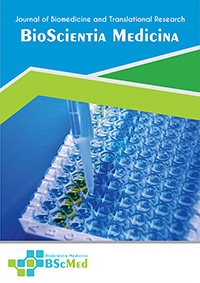Main Article Content
Abstract
Background: Bone turnover markers (BTMs) are essential for monitoring the efficacy of antiresorptive therapies in osteoporosis. While serum C-terminal telopeptide of type I collagen (s-CTX-I) is the recommended reference marker for bone resorption, the utility of the classic marker, urinary hydroxyproline (u-HYP), in the modern therapeutic era remains debated. This study aimed to provide the first network meta-analysis (NMA) to compare the responsiveness of u-HYP and s-CTX-I to antiresorptive treatments.
Methods: We conducted a systematic review and NMA of randomized controlled trials (RCTs) published between January 2015 and December 2024. We searched PubMed, Embase, and the Cochrane Central Register of Controlled Trials for RCTs of antiresorptive therapies (alendronate, denosumab, risedronate) in postmenopausal women with osteoporosis that reported changes in s-CTX-I or u-HYP at 3-6 months. A Bayesian random-effects NMA was performed to calculate the standardized mean difference (SMD) and rank the responsiveness of each marker.
Results: Seven RCTs involving 3,451 patients met the inclusion criteria. The evidence network was well-connected for both markers. Antiresorptive therapies induced a significantly greater reduction in s-CTX-I levels compared to u-HYP. For instance, the effect of denosumab versus placebo was substantially larger when measured by s-CTX-I (SMD: -1.88; 95% Credible Interval [CrI]: -2.25 to -1.51) than by u-HYP (SMD: -0.95; 95% CrI: -1.22 to -0.68). Surface Under the Cumulative Ranking (SUCRA) analysis confirmed that s-CTX-I had a 98.2% probability of being the more responsive marker, compared to 1.8% for u-HYP. Heterogeneity was manageable, and no significant inconsistency was detected between direct and indirect evidence.
Conclusion: This network meta-analysis provides robust, synthesized evidence that serum CTX-I demonstrates a markedly superior dynamic response to antiresorptive therapy compared to urinary hydroxyproline. These findings reinforce the position of s-CTX-I as the preferred biomarker for monitoring treatment efficacy in clinical practice.
Keywords
Article Details
As our aim is to disseminate original research article, hence the publishing right is a necessary one. The publishing right is needed in order to reach the agreement between the author and publisher. As the journal is fully open access, the authors will sign an exclusive license agreement.
The authors have the right to:
- Share their article in the same ways permitted to third parties under the relevant user license.
- Retain copyright, patent, trademark and other intellectual property rights including research data.
- Proper attribution and credit for the published work.
For the open access article, the publisher is granted to the following right.
- The non-exclusive right to publish the article and grant right to others.
- For the published article, the publisher applied for the Creative Commons Attribution-NonCommercial-ShareAlike 4.0 International License.





